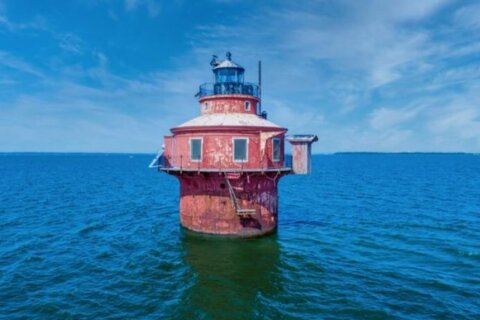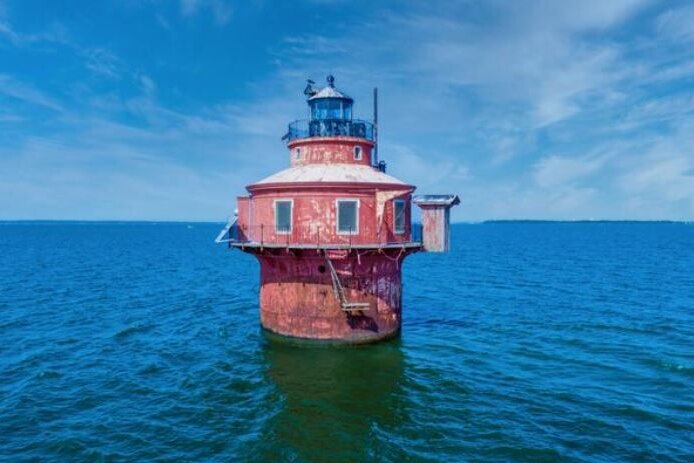What’s it like to own a historic lighthouse?

Not only is it expensive to restore historic lighthouses, but it is incredibly physically demanding for private owners. Chesapeake Bay Magazine covered how these “Saviors of the Lights” struggle to keep up remote lighthouses in the Chesapeake Bay.
Magazine editorial director Meg Viviano joined WTOP’s Michelle Basch and John Aaron to discuss some of the unique lighthouse restoration stories covered in their article.
Listen to the full interview below, and read the transcript.
John Aaron: First off, how is it that individuals can even own lighthouses?
Meg Viviano: Because the National Historic Lighthouse Preservation Act was passed in 2000, the federal government found itself needing to give away or sell about 150 lighthouses across the country, including 13 on the Chesapeake Bay. The preferred mode was to get these lighthouses to nonprofits or government entities. And that didn’t always work out. So some of them ended up auctioned online. There were eight that were put up for auction thus far.
Michelle Basch: Well, your reporter was first to learn that one man now owns three of these lighthouses in the bay. Tell us about him.

Meg Viviano: Yeah, he’s a fascinating guy. His name is Rich Cucé, and he’s from Pennsylvania. Did not even own a boat, but he had this goal to own a lighthouse.
He owns a paint blasting and painting company. So he felt pretty confident that he would have the skills to restore something like this. And he kind of put his hopes in Hooper Island Light, that was in 2022, hoping he could kind of get it for cheap, because the amount of money that you’d have to put into these things is massive. It turned out that that auction kind of really ramped up towards the end and it went for $192,000. He wound up winning that auction. Hooper Island Light is remote, it’s hard to get to. It’s choppy water. It has a very precarious ladder.
He wound up also purchasing Wolf Trap Light down in Virginia. And then, most recently, we kind of got a tip on this, Rich Cucé has bought Craighill Channel Lower Range Front Light, which is just outside the Patapsco River by the Baltimore Channel for the port. He’s now the owner of three lighthouses that are going to need major renovations.
John Aaron: What the heck do you do with a lighthouse that you know is usually only accessible by boat or whatever and it is in some remote place and may or may not be habitable? What do you do with it?
Meg Viviano: There are people who will say, “Oh, that’d be a cool Airbnb.” But a lot of times there are limitations that don’t allow that, whether it be for safety or Coast Guard restrictions that still are in place once you buy it. I know that in the case of Rich Cucé, his vision is to have a nonprofit that will support these and to restore them. He’s hopeful that it will become a place for people to go tour and a place to teach people and really educate people about the bay — being right out in the middle of it — and lighthouses specifically.
Get breaking news and daily headlines delivered to your email inbox by signing up here.
© 2024 WTOP. All Rights Reserved. This website is not intended for users located within the European Economic Area.








